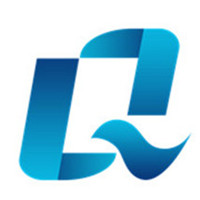Pulsed Cleaning Machines for Metal Surface Texturing
Metal surface preparation is a critical step in numerous industrial processes, from automotive manufacturing to aerospace engineering and medical device production. While cleaning has traditionally been the primary goal of surface treatment, a specific and valuable outcome known as "texturing" or "roughening" is often desired to enhance the functional performance of a component. Pulsed cleaning machines, particularly those based on laser technology, have emerged as a superior method for achieving precise and controlled metal surface texturing.
The Principle of Pulsed Cleaning and Texturing
Unlike continuous processes, pulsed cleaning systems deliver energy to the surface in extremely short, high-intensity bursts. In the context of laser texturing, each pulse instantly heats a microscopic area of the metal to its vaporization point, ablating a tiny amount of material. The key to texturing lies in the controlled nature of this ablation.
By carefully adjusting the laser parameters—such as pulse duration, energy, wavelength, and repetition rate—operators can dictate exactly how much material is removed and the pattern in which it is removed. The overlapping of these ablation craters creates a specific surface topography. This process is fundamentally different from abrasive methods like sandblasting, which is random, or chemical etching, which can be less environmentally friendly.
Key Advantages of Pulsed Laser Texturing
The use of pulsed energy for surface texturing offers several distinct benefits:
Precision and Control: This is the most significant advantage. The texture's features, including roughness (Ra, Rz), peak density, and pattern, can be meticulously engineered and reproduced with high repeatability. Complex patterns, such as dimples or cross-hatches, can be programmed directly onto the surface.
Non-Contact Process: The tool (the laser beam) does not physically touch the workpiece. This eliminates tool wear, prevents mechanical deformation or stress on delicate parts, and allows for the texturing of complex geometries and hard-to-reach areas.
Clean and Eco-Friendly: Laser texturing is a "dry" process that typically does not require chemicals, solvents, or abrasive media. This results in no secondary waste, making it a more sustainable option that aligns with modern environmental standards.
Versatility: Pulsed lasers can texture a wide range of metals, including steel, aluminum, titanium, and carbides, regardless of their hardness.
Integration with Cleaning: The same machine that textures the surface can also be used for a preliminary deep-cleaning step, removing oxides, oils, and contaminants to ensure a pure, active metal surface is textured.
